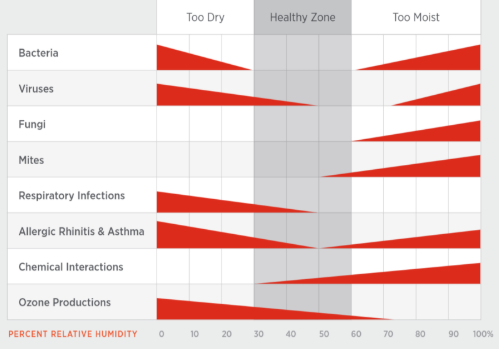A new “open file” research report has just been completed to assess the role of building science and healthy buildings in relation to controlling the risk of health threats such as the COVID-19 pandemic.
The research report is titled Healthy Buildings & the COVID-19 Pandemic: Building Science for HVAC Systems and Building Envelope Best Practices.

Source: ASHRAE as reported in https://www.eeba.org/the-health-window.
Science has been building a case, and leading us for the past 100 years, to better understand the importance of the indoor environment for human health. It has better defined appropriate target conditions for the indoor environment (e.g., temperature, humidity, and air quality) for human health, comfort, and productivity. Furthermore, these advancements in science have pointed to various “building science” opportunities to design and construct building systems to better control optimal indoor conditions for a healthy indoor living environment.
This topic has been taken more seriously for health care facilities (for obvious reasons) than other buildings such as homes, offices, shops, schools, restaurants, and enclosed spaces where people may be more routinely exposed to the risk of disease transmission.
The report asks the reader to:
“Think of the building envelope as the protective skin or PPE of the building and the HVAC system as the internal lymphatic system to maintain internal health and help suppress pathogen propagation and survival within the building’s body.”
The research report recognizes that a healthy indoor environment requires an integrated approach. To be able to effectively control indoor environmental conditions (temperature, humidity, and ventilation) at any time of the year and in any climate, and not expend excessive cost and energy doing so, one must have a good building envelope as a foundation so that good HVAC design can then do its job effectively and efficiently.
COVID-19 is not the only reason to consider that it may be time to apply this “healthy building” knowledge to a broader array of buildings, but perhaps it is the crisis that may finally cause appropriate action to be more broadly considered, accepted, and implemented.